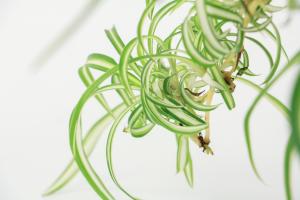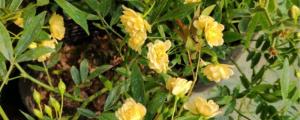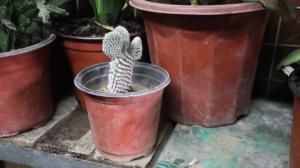How to Get Rid of Gnats in Potted Plant Soils
Gnats are tiny flying insects that can be a nuisance in any indoor or outdoor environment. If you keep potted plants in your home or office, you may have noticed these pesky bugs hovering around the soil. Not only are they annoying, but they can also damage your plants and their roots. Here are some effective ways to get rid of gnats in potted plant soils:
1. Let the Soil Dry Out
Gnats thrive in moist environments, so the first step in getting rid of them is to let the soil in your potted plants dry out. This means watering your plants less frequently or reducing the amount of water you give them. When the soil is dry, gnats will have a harder time laying their eggs and reproducing. Be careful not to let your plants become too dry and harm their growth.
2. Use Yellow Sticky Traps
Yellow sticky traps are an effective way to attract and catch adult gnats. These traps work by using a bright yellow color that the insects find irresistible. The sticky surface of the trap captures the gnats and prevents them from flying around your plants. Place the traps around your potted plants and replace them as needed.
3. Apply Neem Oil
Neem oil is a natural insecticide that can help get rid of gnats in your potted plant soil. Mix a few drops of neem oil with water and spray it directly onto the soil. The oil will coat the soil and prevent the gnats from laying their eggs. It will also kill any existing larvae and pupae. Repeat this process every few days until the gnats are gone.
4. Try Hydrogen Peroxide
Hydrogen peroxide can also be used to get rid of gnats in potted plant soil. Mix one part hydrogen peroxide with four parts water and pour the solution into the soil. The hydrogen peroxide will kill any larvae and pupae in the soil, and the bubbling action will help to aerate the soil. Use caution when using hydrogen peroxide, as it can damage the roots of some plants.
5. Use Sand or Gravel as a Top Layer
Gnats like to lay their eggs in the top layer of soil in your potted plants. To prevent this, you can add a layer of sand or gravel on top of the soil. This will create a barrier that the gnats cannot penetrate to lay their eggs. It will also help to keep the soil from getting too wet.
Conclusion
Gnats in potted plant soil can be annoying and harmful to your plants. By letting the soil dry out, using yellow sticky traps, applying neem oil, using hydrogen peroxide or adding a top layer of sand or gravel, you can effectively get rid of these pests. It is important to practice proper plant care and keep your plants healthy to prevent future infestations. By following these tips, you can enjoy your potted plants without the annoyance of gnats.

 how many times do yo...
how many times do yo... how many planted tre...
how many planted tre... how many pine trees ...
how many pine trees ... how many pecan trees...
how many pecan trees... how many plants comp...
how many plants comp... how many plants can ...
how many plants can ... how many plants and ...
how many plants and ... how many pepper plan...
how many pepper plan...
































